As a pest control specialist, I fully recognize the substantial harm that pests can inflict on homes, businesses, and public health. Whether you’re contending with insects, rodents, or other unwelcome intruders, selecting the appropriate pest control strategy is crucial for ensuring a clean, safe, and pest-free environment. In this guide, we’ll explore key pest control methods and how each effectively addresses various pest challenges.
1. Biological Pest Control
Biological pest control leverages natural predators, parasites, and pathogens to manage pest populations without synthetic chemicals. This environmentally sustainable approach is widely used in agriculture and residential gardening. Common examples include:
- Predators: Introducing beneficial insects, such as ladybugs or spiders, to control harmful pests like aphids and mites.
- Parasites: Utilizing parasitic wasps, which lay eggs inside caterpillars, specifically targeting and reducing pest populations.
- Pathogens: Employing bacteria, fungi, or viruses that infect and kill pests.
Biological pest control offers an eco-friendly, chemical-free solution for those seeking sustainable pest management.
2. Chemical Pest Control
Chemical pest control remains one of the most effective methods for managing severe infestations. It involves the use of pesticides or insecticides to eradicate pests. These chemicals are typically categorized as:
- Contact Pesticides: These eliminate pests upon direct contact.
- Systemic Pesticides: These are absorbed by plants or animals and poison pests that consume them.
While highly effective, it is essential to use chemical treatments responsibly to minimize potential harm to humans, pets, and the environment.
3. Mechanical Pest Control
Mechanical pest control employs physical methods to capture, block, or eliminate pests. This technique is particularly effective for localized infestations and includes:
- Traps: Effective for controlling rodents and insects by capturing or killing them.
- Barriers: Physical barriers like screens or nets can prevent pests like mosquitoes or birds from entering certain areas.
- Hand-picking: In gardens, some pests can be manually removed.
This method avoids the use of chemicals, making it a safe and straightforward solution, particularly for homes with children or pets.
4. Cultural Pest Control
Cultural pest control focuses on modifying the environment to reduce pest habitats and promote natural resistance. This proactive approach prevents infestations through strategies such as:
- Crop Rotation: Interrupts pest life cycles by changing their food sources.
- Proper Sanitation: Keeping areas clean and free of food scraps or standing water discourages pests like ants, cockroaches, and mosquitoes.
- Pruning and Weeding: Regular maintenance of outdoor spaces limits hiding and nesting spots for pests.
This sustainable, long-term strategy effectively prevents infestations while being cost-effective.
5. Electronic Pest Control
Advancements in technology have introduced electronic pest control methods, which repel pests using sound, light, or electromagnetic fields. Examples include:
- Ultrasonic Repellers: Devices that emit high-frequency sound waves that pests like rodents and insects find intolerable.
- Electromagnetic Devices: These alter the electromagnetic fields in an area, driving pests away.
Though chemical-free and convenient, electronic methods may not be sufficient for severe infestations and often work best as a supplementary measure.
6. Integrated Pest Management (IPM)
Integrated Pest Management (IPM) combines various pest control techniques to provide a comprehensive, balanced approach with minimal risk to human health and the environment. IPM prioritizes long-term prevention and involves:
- Monitoring: Regular inspections to detect pest issues early.
- Prevention: Sealing entry points and improving sanitation to block pests from gaining access.
- Control: Employing biological, chemical, and mechanical methods in a targeted, efficient manner.
For those seeking a sustainable pest management solution, IPM is ideal, reserving chemical interventions only when absolutely necessary.
Conclusion
Selecting the appropriate pest control method depends on the type of pest, the severity of the infestation, and your preference for safety and sustainability. Whether you choose biological, chemical, mechanical, or integrated solutions, addressing pest issues promptly helps prevent long-term damage to your property and health. For severe infestations, consulting a professional pest control service ensures effective and safe results.
If you’re experiencing a pest problem, reach out to Pest Control Hampton VA for expert advice and tailored pest management solutions!
